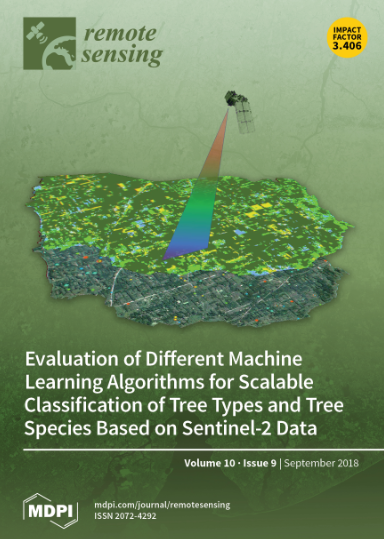2023 年与台风 "杜苏芮 "有关的严重电离层天气的形态特征
IF 4.1
2区 地球科学
Q2 ENVIRONMENTAL SCIENCES
引用次数: 0
摘要
强台风产生的大气重力波(AGWs)可促进能量从对流层向电离层转移,从而导致中尺度巡回电离层扰动(MSTIDs)。然而,海洋区域上空的中尺度巡回电离层扰动具有复杂的三维性质,这给使用地基全球导航卫星系统(GNSS)网络进行探测带来了挑战。本研究采用天基和地基技术相结合的混合方法,研究台风 "杜苏芮 "期间电离层扰动的时空特征。平面图描绘了 7 月 24 日从台风大风区向外延伸的显著等离子体波动,距离台风中心达 1800 公里,而空间天气条件仍然相对平静。这些电离层扰动的传播速度介于 173 米/秒和 337 米/秒之间,符合 AGW 特征和相关传播速度。垂直分布图显示,台风 "杜苏芮 "的能量通过 500 千米层向上传播,导致顶部电离层的等离子体密度和温度大幅提高。值得注意的是,顶部水平密度梯度是底部电离层观测到的密度梯度的 1.5 到 2 倍。建模和观测数据都令人信服地表明,弱背景风有利于与台风 "杜苏芮 "相关的 AGW 的生成,影响了独特的 MSTID 的发展。本文章由计算机程序翻译,如有差异,请以英文原文为准。
Morphological Features of Severe Ionospheric Weather Associated with Typhoon Doksuri in 2023
The atmospheric gravity waves (AGWs) generated by severe typhoons can facilitate the transfer of energy from the troposphere to the ionosphere, resulting in medium-scale traveling ionospheric disturbances (MSTIDs). However, the complex three-dimensional nature of MSTIDs over oceanic regions presents challenges for detection using ground-based Global Navigation Satellite System (GNSS) networks. This study employs a hybrid approach combining space-based and ground-based techniques to investigate the spatiotemporal characteristics of ionospheric perturbations during Typhoon Doksuri. Plane maps depict significant plasma fluctuations extending outward from the typhoon’s gale wind zone on 24 July, reaching distances of up to 1800 km from the typhoon’s center, while space weather conditions remained relatively calm. These ionospheric perturbations propagated at velocities between 173 m/s and 337 m/s, consistent with AGW features and associated propagation speeds. Vertical mapping reveals that energy originating from Typhoon Doksuri propagated upward through a 500 km layer, resulting in substantial enhancements of plasma density and temperature in the topside ionosphere. Notably, the topside horizontal density gradient was 1.5 to 2 times greater than that observed in the bottom-side ionosphere. Both modeling and observational data convincingly demonstrate that the weak background winds favored the generation of AGWs associated with Typhoon Doksuri, influencing the development of distinct MSTIDs.
求助全文
通过发布文献求助,成功后即可免费获取论文全文。
去求助
来源期刊

Remote Sensing
REMOTE SENSING-
CiteScore
8.30
自引率
24.00%
发文量
5435
审稿时长
20.66 days
期刊介绍:
Remote Sensing (ISSN 2072-4292) publishes regular research papers, reviews, letters and communications covering all aspects of the remote sensing process, from instrument design and signal processing to the retrieval of geophysical parameters and their application in geosciences. Our aim is to encourage scientists to publish experimental, theoretical and computational results in as much detail as possible so that results can be easily reproduced. There is no restriction on the length of the papers. The full experimental details must be provided so that the results can be reproduced.
 求助内容:
求助内容: 应助结果提醒方式:
应助结果提醒方式:


